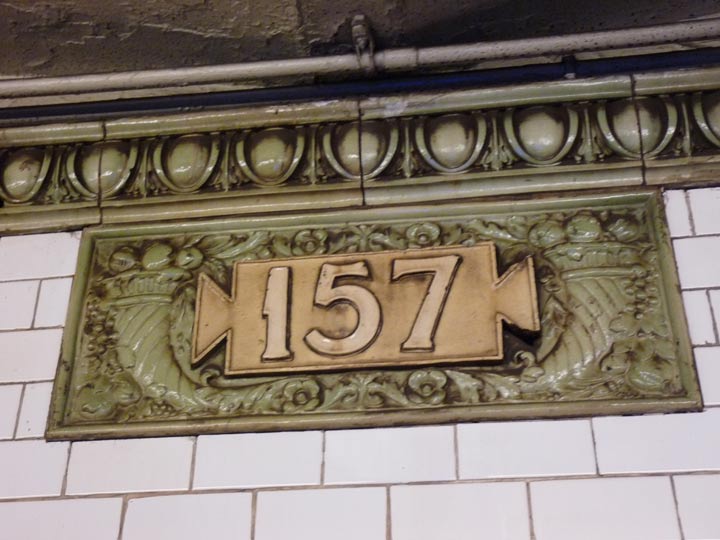These handsome terra cotta station ID plates are a feature of the northern original IRT stations between 79th Street and 145th Street from 1904, and the 157th Street station from the year after that. They’re currently painted buff and light green. I haven’t checked my Phil Coppola Silver Connections lately, so I’m not sure what color they were painted during his 1970s survey and certainly not what color they originally were.
The form is familiar to those familiar with classical art. A cornucopia, or “horn of plenty” is a large horn — some say a bull’s or goat’s horn — filled with fruits, nuts and other foodstuffs. Hercules, the story goes, was wrestling with a river god disguised as a bull, and broke off one of the river god’s horns which was transformed by naiads into the cornucopia; the story was painted by Thomas Hart Benton.
Check out the ForgottenBook, take a look at the gift shop, and as always, “comment…as you see fit.”
10/29/19


1 comment
According to http://www.nycsubway.org, 157th Street opened November 12, 1904 and served as the north terminal of today’s #1 line until March 16, 1906, when the line was extended to 215th St. The original platform was lengthened in 1948 to ten cars, which is why half of the platform lacks the original details such as the terra cotta ID plates. This station is very shallow and is only one flight down from the street level. But just north of this station the topography becomes very steep as one continues uptown, which is why it is called Washington Heights. The #1 trains enter the Fort George Tunnel upon leaving 157th Street going uptown, stopping at three very deep stations at 168th, 181st, and 191st Streets. The first two have beautiful barrel-vault ceilings reminiscent of much more recent stations in Washington DC. 191st Street was not added until 1911 and lacks the barrel vault but is in fact the deepest station in NYC, about 200 feet below the street level. The #1 trains emerge into daylight at Dyckman Street, where the land slopes downward. A 2015 FNY posting very ably covered the Fort George area, including the handsome portal at Dyckman Street Station’s south end.
The Fort George IRT Tunnel is an almost-forgotten, but very significant, piece of early 20th century civil engineering. It was constructed deep below street level in a bored tunnel, with dynamite used to blast out the rock. Even though this is Manhattan, it was much like building railroad tunnels through mountains in the American West or Switzerland. Fort George Tunnel was modeled after the 19th century Hoosac Tunnel in Massachusetts, still an active railroad tunnel.